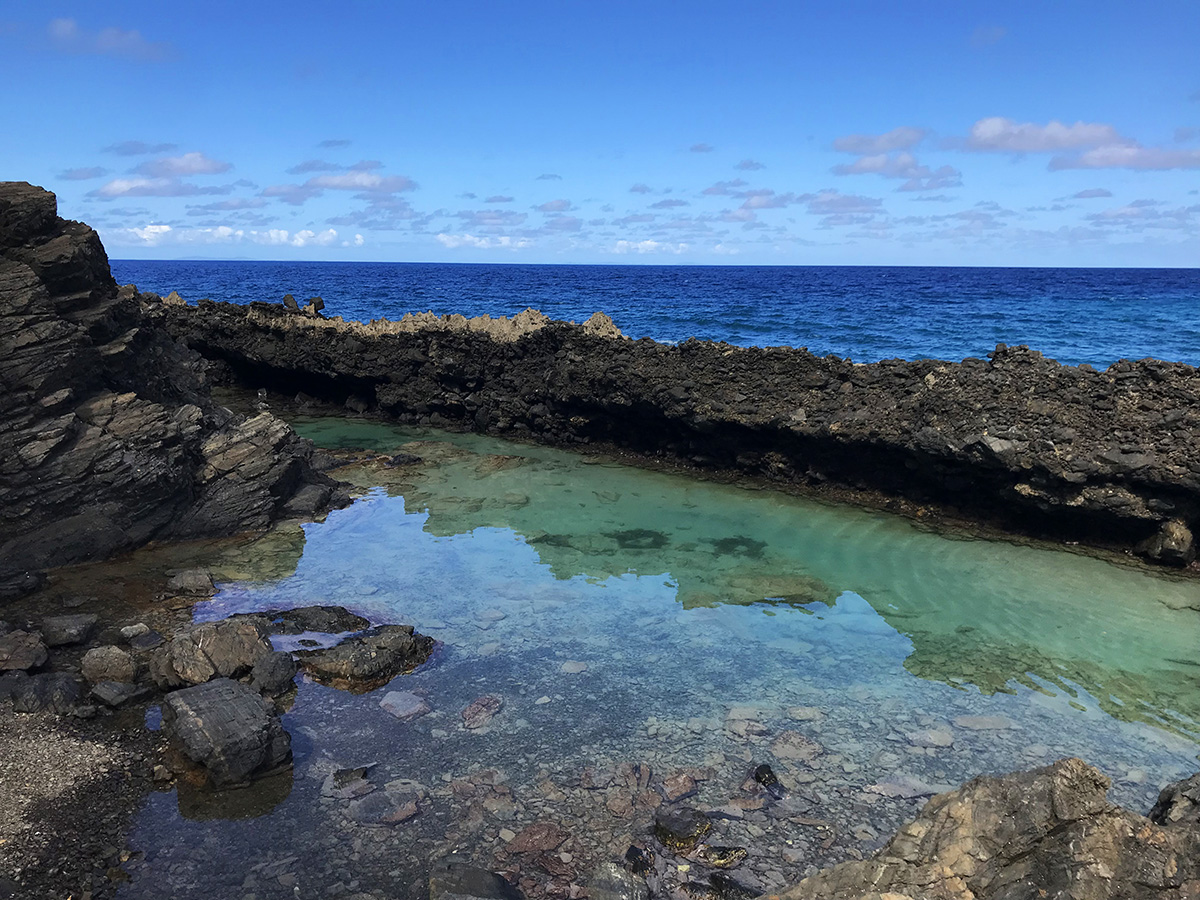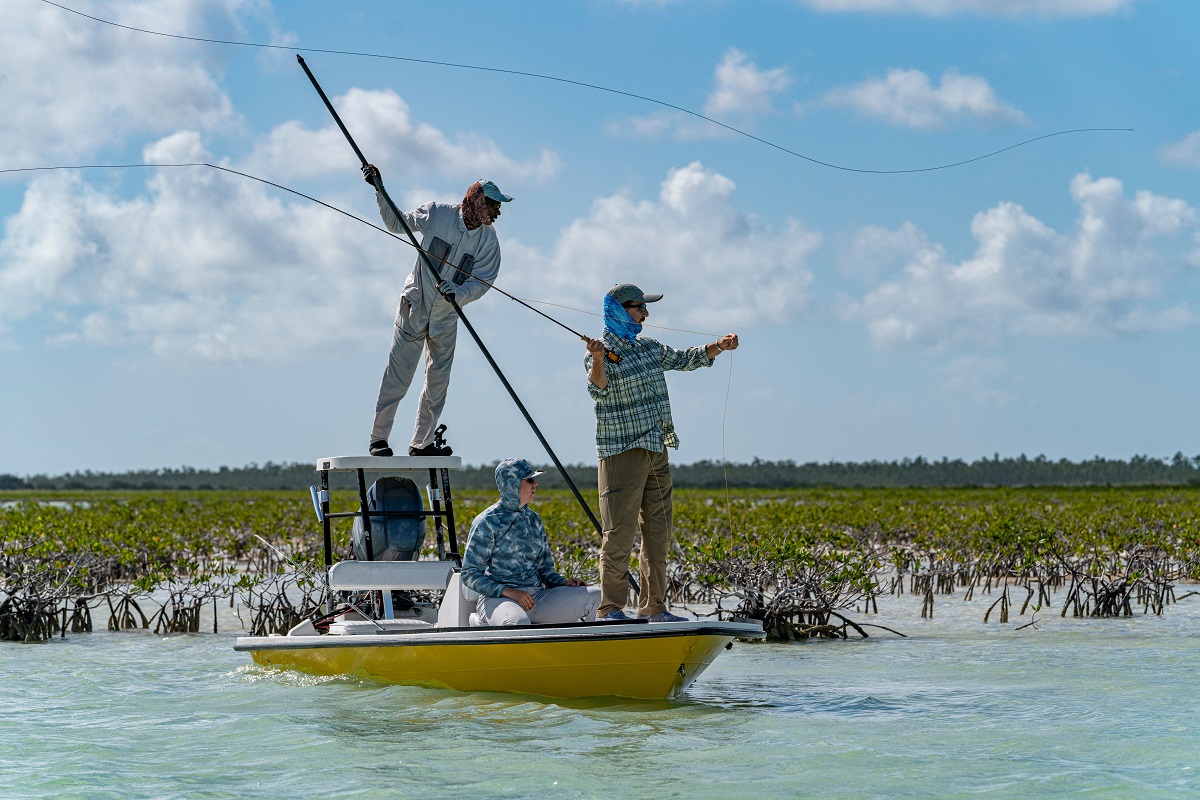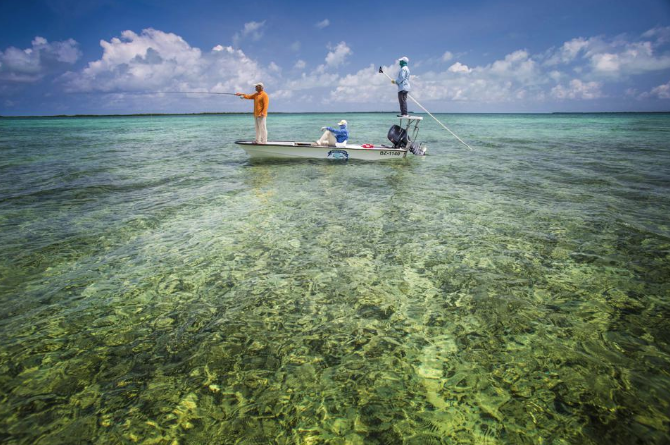How Hurricane Dorian reshaped the world of flats fishing
Deep Water Cay, some would argue, offered some of the best bonefishing in the Bahamas—if not the entire Caribbean. It was a destination created in 1958 by angling legend Gil Drake and Field & Stream editor A.J. McLean. The duo embarked Ponce de Leon-like on a journey to uncover the greatest bonefishing in the Bahamas, which some would contend doesn’t differ greatly from finding the Fountain of Youth.
Their travels led to Deep Water Cay, a place with exactly the right mix of flats and nearby deep ocean shelves that provide the optimal recipe to consistently support extraordinary numbers of bonefish on the flats, big bones at that. The constant circulation of water at the right temperature on these flats allows them to fish longer than most places in the archipelago. That fact wasn’t lost on the lodge’s current owner either, Paul Vahldiek, a land and water conservationist and raconteur who is active from the Bahamas to the Rocky Mountains.
The lodge was a favorite of captains of industry, corporate CEOs and famous anglers including Michael Keaton, Tom Brokaw, Liam Neeson, Huey Lewis, Patagonia founder Yvon Chouinard, novelist Tom McGuane and legendary fly fishing sensei Lefty Kreh.
If you doubt what vitality bonefishing can bring to a soul, you should have spent a few minutes with Kreh who, when I fished with him in his late 80s, greeted each morning on the flats like a child meeting a new playground. He brought hope to youngsters in their sixties and seventies who wanted to be doing what Kreh was at his age. Perhaps he’s the Fountain of Youth? I wondered, once watching him work a room of fly fishermen like a politician in need of money.
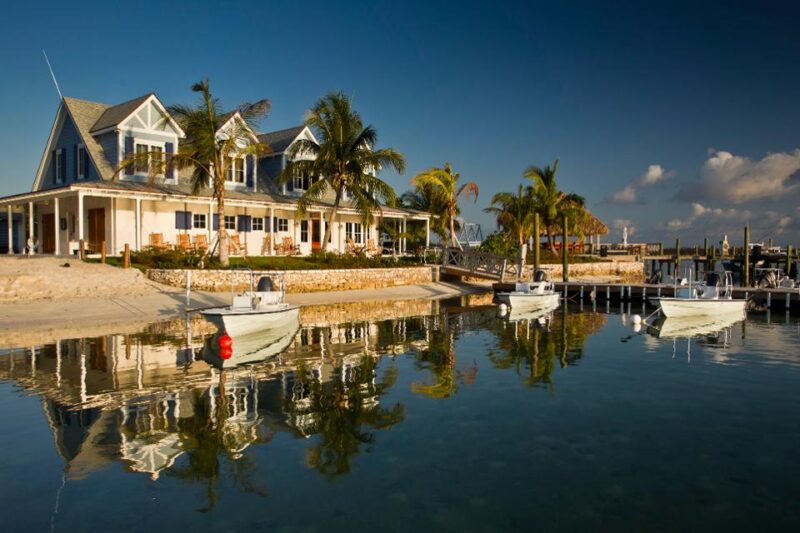
The marina at Deep Water Cay before Hurricane Dorian destroyed the revered bonefishing destination in September. Photo by Marcos Furer, Dorsey Pictures
The first morning that I fished Deep Water, I joined veteran guide Omeko Glinton (Meko for short) who eased us off the dock before the ensemble of other anglers had left the confines of the lodge. Meko wanted to hit the first flat just as the sun was high enough in the sky to pierce the surface glare and reveal the mirrored form of the bonefish, or at least their shadows cast on the sand beneath them. After a 30-minute run, it wasn’t long before Meko spied our initial fish.
“Point your rod at 10 o’clock,” he said. “See ‘em at 60-feet?”
I didn’t see the bones but cast anyway, feeling like Helen Keller at the front of the skiff.
“They spooked…don’t worry,” he said.
“I’ll take your word for it…I never saw them.”
The bones were hungry and on the move, so it wasn’t long before we found a tailing school, a tell-tale sign of feeding fish that should be receptive to taking a fly. He eased the boat about 50-feet from the pod, cocked the craft in perfect position for me to cast with the breeze quartering from behind. Three false casts and the mantis shrimp plunked like bonefish manna from heaven in front of the lead fish’s nose. Apparently feeling blessed for the gift, the six-pound bone picked it up and headed to Bimini in a flash doing to my reel what Hendrix did to a guitar.
“Way to go my man, you got ‘em!”
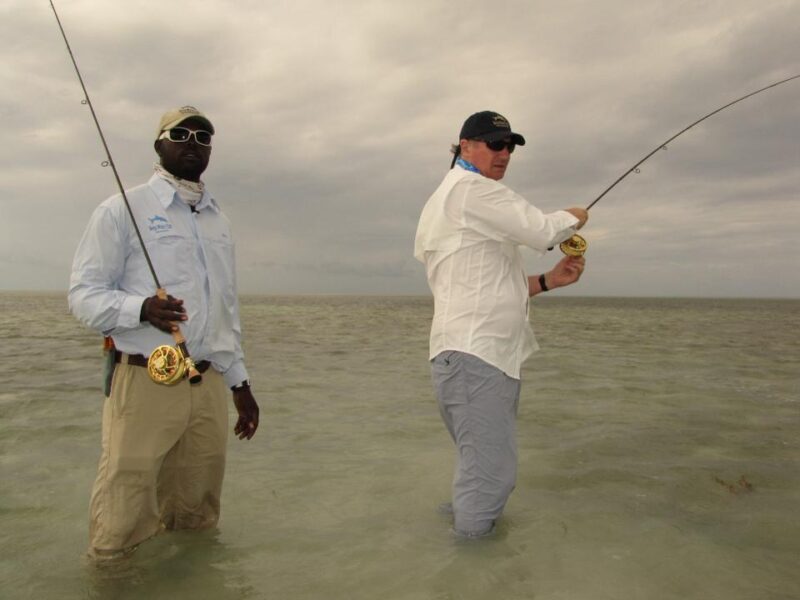
Guide Meko Glinton introduces Liam Neeson to one of Deep Water Cay’s legendary bonefish. Photo by John Macgillivray, Dorsey Pictures
A great flats guide is many things. Of course, he must possess raptor-like vision to see bones in all manner of light conditions so that he can direct his clients to cast to the fish. Then he has to have a nose for reading currents and predicting where the bonefish are going to be at any given weather and tidal condition. He must be able to size up his client and put him in position to reach a fish, no matter his casting skill. If he wants a decent tip, he needs to realize that while he lives on the flats and has honed his vision to pick up the subtle shape of a bonefish at great distance, his clients seldom possess the same ability. Most of all, however, the great ones know they’re blessed to be making a living doing what others spend a lifetime making money to afford to do. Then, suddenly, Meko snapped me out of my meditations on guiding as we poled through the flat in search of more fish.
“Give me a cast…50-feet at 10 o’clock. Strip…strip…stop…strip.”
Bingo! The fish can’t resist chasing the final strip. The strip, strip, stop…strip cadence, when properly timed with a fish’s reactions, is poison to bones, often tweaking an otherwise indifferent reaction. The key is being able to see the fish well enough to understand its relationship to the fly in the water. Did I say having the vision of a bird of prey is important to a flats guide?
The first time a trout fisherman hooks a bonefish an entire recalibration of fly fishing occurs. It did for me, anyway. Up until that moment, there is no way to know that a 5-pound fish could possess such wicked strength and speed. I don’t know who put them on the clock, but I’ve read that bonefish can swim upwards of 40 miles per hour, which seems a conservative estimate by my observations. Bonefish are piscatorial spark plugs that react to a hook the way a horse does a whip. If bonefish could jump they would never be landed. If they grew to 50-pounds they would rule the oceans.
“Point your rod straight off the bow,” said Meko, once again breaking me from my flatsendental meditation. “Little more left…shoot it 30-feet.”
This bonefish picked up the fly on the move and made three long runs…the third one interrupted by a nurse shark attracted by the commotion and looking for a snack. I put the wood to the fish to get it in quickly to save it from the shark that wanted to play surgeon. Meanwhile, Meko slapped his pole at the predator in an effort to cancel its dinner reservation.
A distressed bonefish leaves a scent trail that sharks follow like a bird dog might a pheasant. We took the four-pounder into the mangroves and released it there, a sanctuary too shallow for sharks. Once the fish regained its strength, it would be ready to handle the usual predatory challenges found on these flats—perhaps the most savage ecosystem on our planet with scores of sharks, barracuda and needlefish forever looking for a meal.
Like any morning on the water with Meko, it was one to remember—both for the fish and the company, for he’s like sharing a boat with your own personal life coach.

The aftermath of Dorian left much of Grand Bahama and the Abacos devastated, including most of the structures of Deep Water. Photo by Paul Vahldiek, Deep Water Cay
Then came Hurricane Dorian, the category five monster that hit the Bahamas early last September, stalling over Grand Bahama looking like the eye of the devil from space. More than 70 confirmed deaths and nearly 300 people went missing, with more than $3.4 billion in damages, including the annihilation of Deep Water Cay.
Since that horrific time, Vahldiek and others have established the Deep Water Cay Family – Hurricane Relief Effort GoFundMe page which has already raised a quarter million dollars for the guides and staff whose sole livelihood depended on work at Deep Water. And similar sites have been established for other lodges across the Bahamas where people are still reeling from the impact of Dorian. To donate, please send to the below charitable entity: Deep Water Cay Family Hurricane Relief Effort Inc. at 3300 PGA Blvd., Suite 600, Palm Beach Gardens, FL 33410.
This article originally appeared in Forbes. Follow Sporting Classics TV host Chris Dorsey at Forbes.
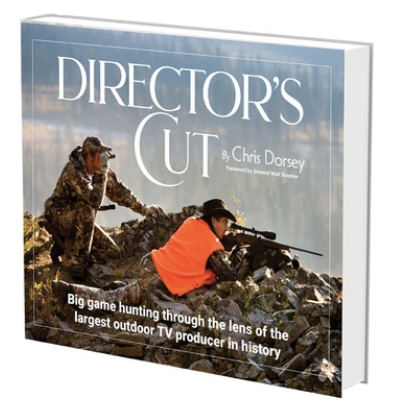 The World Of Sporting Literature Has A New Classic from one of the planet’s most widely traveled hunters. Director’s Cut…Big game hunting through the lens of the largest outdoor TV producer in history, is a book and film production more than 15 years in the making. Author and Executive Producer Chris Dorsey, along with a team of the world’s best sporting life photographers and cinematographers, embarked on expeditions to distant corners of the globe to create an indelible portrait of big game hunting.
The World Of Sporting Literature Has A New Classic from one of the planet’s most widely traveled hunters. Director’s Cut…Big game hunting through the lens of the largest outdoor TV producer in history, is a book and film production more than 15 years in the making. Author and Executive Producer Chris Dorsey, along with a team of the world’s best sporting life photographers and cinematographers, embarked on expeditions to distant corners of the globe to create an indelible portrait of big game hunting.
Dorsey has spent the past 25 years investigating and chronicling the animals, people and unforgettable places home to remarkable big game hunts while producing nearly 60 outdoor adventure television series. In the process, his teams amassed a library of more than 100,000 hours of HD footage and nearly 150,000 photographs, making Director’s Cut (the book and DVD) an unmatched celebration of the world of big game hunting. Pre-Order Now


